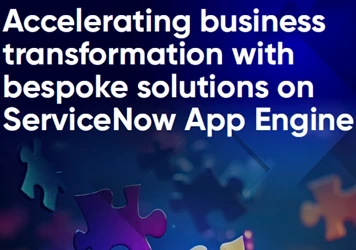Reducing risk on your next process change
Add bookmarkWhat do the fields of stock options trading and process improvement have in common? Probably a lot, but one aspect standing boldly at the front of the line is this: It’s all about managing risk.
Bearish, Bullish, or Neutral, top options strategies are categorized by how much risk you are willing to take on. In driving process change in any organization, Lean Six Sigma Belts, Project Managers, and Change Practitioners have hard drives overflowing with risk assessment tools. These range from crude and simple to sophistication levels that make NASA engineers drool. I’ve tried many of them and have a fondness for the simpler ones that anyone can learn quickly and use immediately.
For our column this month we’ll focus on Sponsorship Risk. You can’t easily push a rope up hill. Best to be pulled from the top. What’s easier: trying to implement a process change with robust management support, or trying to do it when management is neutral (or working against you!)? Thus, having able and willing change sponsorship is vital to an on-time, successful change. Assessing that risk early on is key to ensuring success. You want your management sponsors to be both able AND willing to do their job in making any new process happen.
Here's a 4-square grid with Sponsor Ability on the vertical axis (ranging from zero ability to average ability to overqualified). On the horizontal axis is Sponsor Willingness (ranging from Negative toward the change to average motivation to Super-motivated). You’ll want to see which square your sponsor(s) fall in as your strategies will be different.
Ability: To what extent is your Sponsor capable of fulfilling their role as a sponsor all the way through the project? Have they done this before (successfully)? Do they know what is expected of them? Do they possess the understanding of the problem and potential solution, time, energy, tools, knowledge, financial and personnel resources, communication skills, relationships, political pull, etc. to help provide the path to success for your team? If not, some of these can be corrected easily via education or access, or by building a sponsorship team – fellow sponsors. While no one sponsor may have the full set of ability attributes, between everyone on your sponsorship coalition, you can check all the boxes.
Willingness: How hungry is the Sponsor for this change to happen? How clearly do they see the vision for the change and desire that? How intensely do they feel the pain of the current way things work and want to remedy that pain? Do they understand that real life will get in the way and try to pull them away from your change? Are they committed to fulfilling their sponsorship duties even if it is inconvenient or painful for them to do so? If not, your risk goes up. Are other sponsors available or appropriate? Can you (or another appropriate person) work on reframing your Sponsor’s frame of reference regarding this change? Can project success be built into their performance objectives, pay, etc. as motivation?
High Ability | High Willingness: The super-sponsor. Full speed ahead my friend. You won the sponsorship lottery. Make efficient use of their time and don’t take them for granted.
High Ability | Low Willingness: The disinterested expert. They can help – not sure they want to – possibly this project was foisted on them. Good luck getting your calls and emails returned. Is there anyone this sponsor listens to (perhaps a peer or boss) that you can recruit to help manage the sponsor’s perception and thus willingness?
Low Ability | High Willingness: The eager beginner. This sponsor wants to help but lacks the knowledge, resources, or tools to do so. Possibly education on key sponsor duties may help, pairing them with an experienced sponsor mentor, or forming a support sponsor coalition.
Low Ability | Low Willingness: [No politically correct phrase for this one – make up your own] This person doesn’t want to help you and even if they did, they couldn’t. Certainly, one strategy is to pull the “ejection” lever and try to get out of that environment. Can you possibly change the timing, location, or content of the process change such that it gets you off that sponsor’s radar and onto a more hospitable sponsor’s radar? Is it possible to replace that sponsor with another? Can you build a sponsor coalition that would insulate the project from the damage that sponsor may cause? If none of that works and you must press forward, consider working on the willingness aspect first, which may open a crevice of opportunity to then work on the ability aspect.
Assessing and managing sponsorship risk levels early on in a project has proved beneficial for many a process improvement team! Where would you place your sponsors?
Now if you’ll excuse me, the NYSE just opened and I have some other risk to manage. Happy change!






























